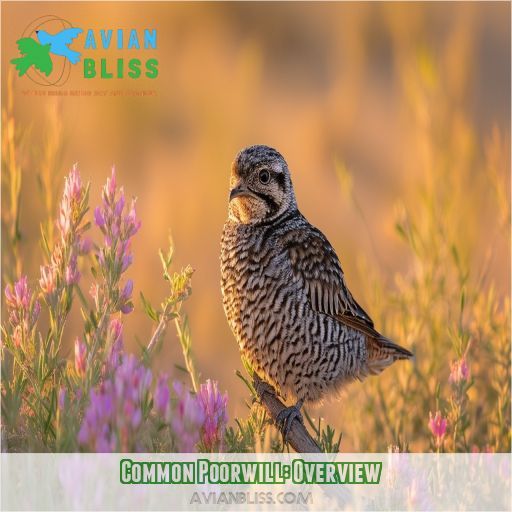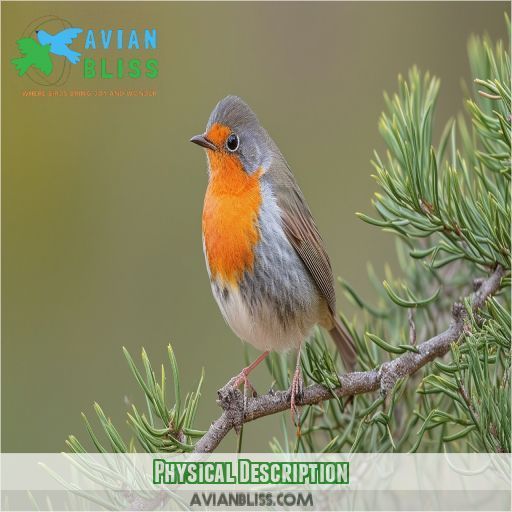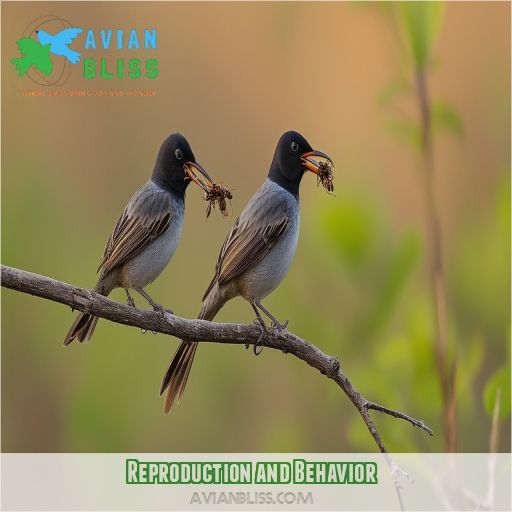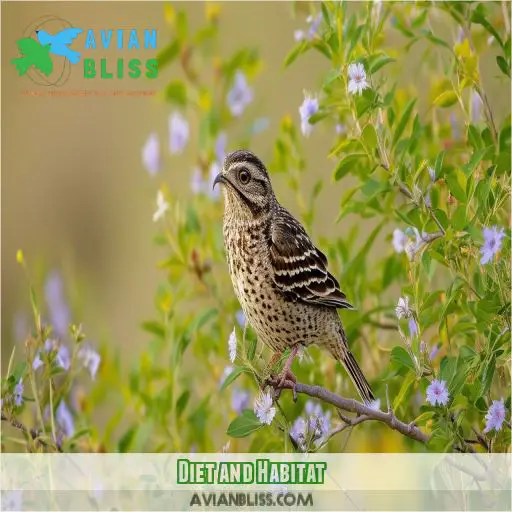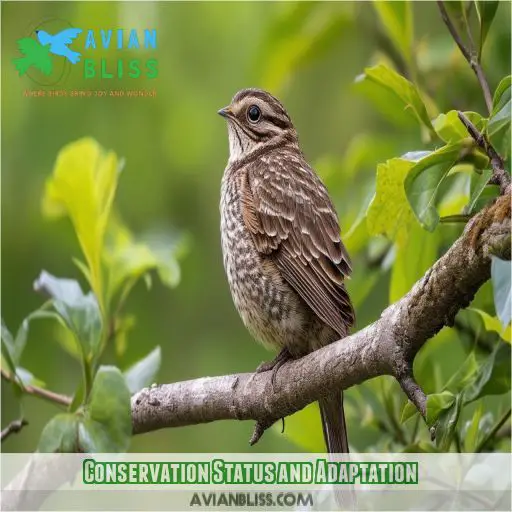This site is supported by our readers. We may earn a commission, at no cost to you, if you purchase through links.
 You’re about to uncover the secrets of a truly incredible bird.
You’re about to uncover the secrets of a truly incredible bird.
The common poorwill is a master of disguise, with stunning features that are often hidden from view.
In this article, you’ll explore its unique physical traits, nocturnal habits, and fascinating behaviour.
Get ready to be amazed as you discover how this bird adapts to the cold winter months through an unusual strategy: hibernation.
Prepare to learn more about the common poorwill, a bird that defies the ordinary.
Table Of Contents
- Key Takeaways
- Common Poorwill: Overview
- Physical Description
- Reproduction and Behavior
- Diet and Habitat
- Conservation Status and Adaptation
- Frequently Asked Questions (FAQs)
- What are some interesting facts about the common poorwill?
- What is the difference between a nighthawk and a common poorwill?
- Does common poorwill hibernate?
- What do common poorwills eat?
- How do common poorwills handle the heat?
- Do common poorwills migrate?
- Are common poorwills endangered?
- What are some threats to common poorwill populations?
- How do common poorwills hunt in the dark?
- Conclusion
Key Takeaways
- The common poorwill is a master of disguise, with incredible camouflage that blends seamlessly into its surroundings.
- It’s the only known bird that hibernates, entering a state of torpor to survive harsh conditions.
- With large eyes, night vision, and rictal bristles, it’s an expert nocturnal hunter, ambushing its prey.
- Despite its small size, this bird has some big adaptations, including heat tolerance and unique nesting habits, making it a fascinating creature of the night.
Common Poorwill: Overview
You’re about to uncover the secrets of one of nature’s most fascinating nocturnal birds – the Common Poorwill.
This elusive nightjar, a master of camouflage, has adapted perfectly to its western habitat.
You’ll be amazed to learn that it’s the only known bird capable of true hibernation, entering a state of torpor to survive harsh conditions.
As you learn more, you’ll discover its unique breeding habits and the challenges it faces in its arid environment.
From its distinctive call to its stealthy hunting techniques, the Poorwill’s life is shrouded in mystery.
Whether you’re a bird enthusiast or simply curious about nature’s wonders, the Common Poorwill’s story will captivate you.
Get ready to explore the life of this remarkable creature that’s been hiding in plain sight all along!
Physical Description
You’ll find the Common Poorwill to be a small nightjar with distinctive gray-brown plumage that provides excellent camouflage. Its unique physical features include large eyes adapted for night vision, rictal bristles around the mouth for prey detection, and a pectinated claw on its toes used for scratching and feather maintenance.
Plumage and Size
You’ll be amazed by the Common Poorwill’s masterful camouflage.
Its feathers sport a cryptic blend of gray-brown hues, adorned with intricate patterns and markings.
This visual trickery helps it blend seamlessly with its surroundings.
While not polymorphic, both sexes showcase similar plumage, displaying bilateral symmetry.
At just 7-8 inches long, it’s the smallest nightjar in North America, with a wingspan of about 12-13 inches.
Unique Physical Features
You’ve seen the Common Poorwill’s stunning plumage, but did you know about its incredible adaptations? This terrestrial bird’s got some tricks up its sleeve:
- Camouflage that’d make a chameleon jealous
- A pectinated claw for grooming those feathers
- Rictal bristles around its beak for sensing prey
With night vision that puts owls to shame and heat tolerance that’d make a cactus sweat, this monogamous Nearctic native’s perfectly suited for its range. Talk about a bird that’s got it all!
Reproduction and Behavior
You’ll find Common Poorwills nesting on bare ground, often under shrubs or near rocks, where they lay two white eggs directly on the substrate. During the breeding season, males attract mates with their distinctive "poor-will" calls, which they repeat throughout the night to establish territory and entice females.
Nesting and Incubation
You’ll be amazed by the Common Poorwill’s nesting habits! These nocturnal birds choose their nest sites carefully, opting for bare ground in scrub forests. Here’s a quick look at their nesting behavior:
| Aspect | Description | Importance |
|---|---|---|
| Location | Bare ground, often near rocks or shrubs | Camouflage |
| Eggs | 2 white eggs | Survival strategy |
| Incubation | 20-21 days | Parental investment |
| Seasonal | Spring to early summer | Reproduction timing |
Both parents share incubation duties, ensuring their chicks’ survival in the harsh scrubland environment.
Mating Behavior
During the breeding season, male Common Poorwills showcase their distinctive mating calls, a soft, whistled "poor-will" repeated throughout the night, attracting potential mates.
These nocturnal birds select open, arid areas for nesting, favoring bare ground, rocks, and scattered shrubs.
While their courtship rituals are challenging to observe due to their nocturnal nature, their vocal activity is a telltale sign of breeding behavior.
Diet and Habitat
As a nocturnal bird, the Common Poorwill feeds on insects, using its keen eyesight and hearing to locate prey in the dark. This bird is found in scrublands of western North America, favoring dry, open habitats with sparse vegetation.
Nocturnal Feeding Habits
As a nocturnal bird, the Common Poorwill has developed unique adaptations to find food in the darkness. Its diet primarily consists of insects, including moths, beetles, and other flying insects. With keen eyesight and hearing, this bird is an expert at locating its prey, even in the darkest of nights.
Preferred Scrubland Habitat
The Common Poorwill, Phalaenoptilus nuttallii, is a master of camouflage, favoring scrubland habitats with these characteristics:
- Sparse Vegetation: They prefer areas with minimal plant cover, making it easier to spot their insect prey and navigate their territory.
- Open Spaces: These birds need room to fly and forage, so wide-open spaces are essential.
- Rocky Terrain: While not always present, rocky areas like mesas, washes, and hills provide ideal nesting and perching spots.
Conservation Status and Adaptation
The Common Poorwill’s ability to enter torpor, reducing metabolic activity, is a fascinating adaptation to harsh conditions. However, climate change remains a significant threat to this bird’s habitat and food sources, and ongoing research is needed to understand and mitigate these impacts.
Hibernation and Torpor
The Common Poorwill is a master of energy conservation, employing torpor as a strategy to survive harsh conditions.
This bird can enter a state of reduced metabolic activity, lowering its body temperature and oxygen consumption dramatically.
This adaptation is key to its survival during cold nights and food shortages.
Classified as "Least Concern," this bird’s ability to hibernate and its unique ecosystem roles make it an important part of the western North American landscape.
Climate Vulnerability
While the Common Poorwill is currently classified as "Least Concern," climate change and warming trends could impact its habitat and food sources.
Rising temperatures and shifting precipitation patterns may affect insect populations, leading to an insect decline that threatens the bird’s diet.
The species’ ability to hibernate might aid in adapting to some climate changes, but the long-term survival remains uncertain.
Conservation efforts are important to understand and mitigate these potential threats, making sure the Common Poorwill continues to exist in a changing environment.
Frequently Asked Questions (FAQs)
What are some interesting facts about the common poorwill?
The common poorwill is the smallest North American bird of the nightjar family. It’s a nocturnal bird with large eyes and a short tail. It’s the only bird known to hibernate for extended periods.
What is the difference between a nighthawk and a common poorwill?
Well, if you hear a three-syllable call of "whip-poor-will", you’re likely hearing a whip-poor-will. Common nighthawks aren’t exactly songbirds, with a nasal "peent" call. You’re more likely to spot a nighthawk in flight, and they’ve white throat patches and wing bars. Common poorwills are smaller, with shorter tails.
Does common poorwill hibernate?
Yes, the common poorwill is the only known bird to hibernate. It enters a hibernation-like state, called torpor, when food is scarce, reducing its metabolic activity to conserve energy.
What do common poorwills eat?
You’re curious about what these birds eat. Common Poorwills are insectivores, eating mostly flying insects, especially moths and beetles. They also eat grasshoppers, flying ants, flies, crickets, worms, and chinch bugs.
How do common poorwills handle the heat?
To survive extreme heat, you pant, releasing water through your skin, and enter torpor, slowing your metabolism to conserve energy and reduce body temperature.
Do common poorwills migrate?
Yes, Common Poorwills migrate south for winter, although not all do. They travel to Mexico and the southwestern United States.
Are common poorwills endangered?
No, common poorwills aren’t considered endangered. Their population appears to be increasing, and their status is evaluated as "Least Concern.
What are some threats to common poorwill populations?
Urbanization, vehicle strikes, and climate change are the main threats to the Common Poorwill. Urbanization leads to significant habitat loss, while climate change affects their food supply and habitat.
How do common poorwills hunt in the dark?
Common poorwills use an ambush hunting style. They sit on the ground or a low perch and fly almost vertically upwards to capture prey. Their large eyes are adapted for low light conditions, and their mouths are large for prey capture. They make 200 to 300 flights per night to obtain a minimum of 7 g of insects.
Conclusion
So, what’s the deal with the common poorwill?
Well, now you know this bird is far from common. From its stunning yet subtle physical traits to its nocturnal habits and unique hibernation strategy, the common poorwill is a master of adaptation. Whether it’s blending into its scrubland habitat or enduring the cold winter months through torpor, this bird defies the ordinary. You’ve explored its fascinating reproduction, behaviour, diet, and conservation status, uncovering the secrets of a truly remarkable creature.

